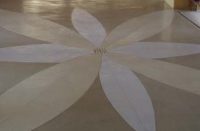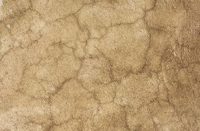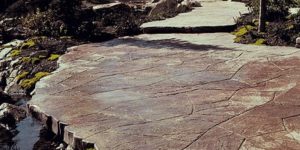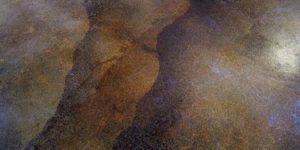I receive a lot of questions from people looking for a quick answer that does not require much in the way of a technical explanation. Here are two such questions and answers you might find interesting and informative.
I recently poured a concrete driveway and tried for an exposed aggregate look. I waited a little too long before washing the mortar layer off. Now, I have some areas that won’t spray off. I chipped off those areas with a hammer and now they look very uneven and inconsistent in color. I want to use a resurfacing product to cover the aggregates. I would appreciate any advice you have on fixing this error.

This is one of the few times I recommend an acid for a concrete repair. A strong acid wash should help even out the surface. Start with a muriatic acid diluted 1:1 with water. Treat the entire area with the acid and scrub the acid using a stiff bristle acid-resistant broom.
Consider using a gelled acid to control the runoff or to avoid damaging other surfaces, grass and/or plants. It may take several acid applications to achieve the desired look. If a stronger acid is required, test an area using straight (undiluted) acid. Never let the acid dry on the surface, as this can lead to a white/green/yellow residue that is very difficult to remove.
No matter the type of acid or dilution, always neutralize the surface. A solution of 5 gallons of water, a cup of household bleach and a few squirts of kitchen dish soap make a great neutralizing solution. Scrub the entire area treated with acid with the neutralizing wash. Rinse with clean water and let the surface dry.
P.S. I always recommend sealing exposed aggregate surfaces with a penetrating waterproofing sealer.
A thin concrete overlay was applied over a wooden subfloor. The subfloor was securely nailed and the seams were filled and taped before a waterproof primer was applied. Why are the seams now showing through and why have some cracked?

The primer was not thick enough to act as a barrier to keep the seams from migrating and showing through the overlay. Most manufacturers of overlay systems specify a 5- to 7-step process when a cement-based overlay is being applied over wood. Here are the steps:
- Patch and fill cracks and seams.
- Apply primer.
- Put down cement-based mortar bed and/or waterproof membrane and/or crack suppression membrane.
- Apply primer.
- Apply scratch coat.
- Apply primer.
- Finish with the overlay system.
Keep in mind that wood is a very flexible material when compared to concrete and you need a fairly stout layer or layers of material to keep any movement of the wooden subfloor from shadowing through. If you are still committed to an overlay on your floor, use the overlay you have down as an initial scratch coat and continue, starting with step 2 above.
The most important part of the process is step 3. This is where you need to use a thick enough material or membrane to resist cracking or shadowing from the wooden subfloor through to the overlay.
A word of caution: Even with the best materials and most detailed installation, applying a thin overlay over a wooden substrate is risky. In my experience almost all of these types of installations develop some cracks over the life of the floor.















